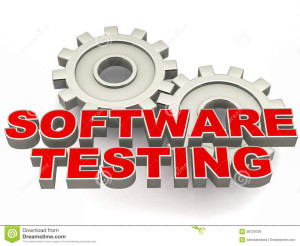 31. What kind of input do we need from the end user to begin proper testing?
31. What kind of input do we need from the end user to begin proper testing?
The product has to be used by the user. He is the most important person as he has more interest than anyone else in the project
From the user we need the following data:
The first thing we need is the acceptance test plan from the end user. The acceptance test defines the entire test which the product has to pass so that it can go into production.
We also need the requirement document from the customer. In normal scenarios the customer never writes a formal document until he is really sure of his requirements. But at some point the customer should sign saying yes this is what he wants.
The customer should also define the risky sections of the project. For instance, in a normal accounting project if a voucher entry screen does not work that will stop the accounting functionality completely. But if reports are not derived the accounting department can use it for some time. The customer is the right person to say which section will affect him the most. With this feedback the testers can prepare a proper test plan for those areas and test it thoroughly.
The customer should also provide proper data for testing. Feeding proper data during testing is very important. In many scenarios testers key in wrong data and expect results which are of no interest to the customer.
32. Can you explain the workbench concept?
In order to understand testing methodology we need to understand the workbench concept. A Workbench is a way of documenting how a specific activity has to be performed. A workbench is referred to as phases, steps, and tasks as shown in the following figure.
There are five tasks for every workbench:
Input: Every task needs some defined input and entrance criteria. So for every workbench we need defined inputs. Input forms the first steps of the workbench.
Execute: This is the main task of the workbench which will transform the input into the expected output.
Check: Check steps assure that the output after execution meets the desired result.
Production output: If the check is right the production output forms the exit criteria of the workbench.
Rework: During the check step if the output is not as desired then we need to again start from the execute step.
33. Can you explain the concept of defect cascading?
Defect cascading is a defect which is caused by another defect. One defect triggers the other defect. For instance, in the accounting application shown here there is a defect which leads to negative taxation. So the negative taxation defect affects the ledger which in turn affects four other modules.
34. Can you explain cohabiting software?
When we install the application at the end client it is very possible that on the same PC other applications also exist. It is also very possible that those applications share common DLLs, resources etc., with your application. There is a huge chance in such situations that your changes can affect the cohabiting software. So the best practice is after you install your application or after any changes, tell other application owners to run a test cycle on their application.
35. What is the difference between pilot and beta testing?
The difference between pilot and beta testing is that pilot testing is nothing but actually using the product (limited to some users) and in beta testing we do not input real data, but it’s installed at the end customer to validate if the product can be used in production.
36. What are the different strategies for rollout to end users?
There are four major ways of rolling out any project:
Pilot: The actual production system is installed at a single or limited number of users. Pilot basically means that the product is actually rolled out to limited users for real work.
Gradual Implementation: In this implementation we ship the entire product to the limited users or all users at the customer end. Here, the developers get instant feedback from the recipients which allow them to make changes before the product is available. But the downside is that developers and testers maintain more than one version at one time.
Phased Implementation: In this implementation the product is rolled out to all users in incrementally. That means each successive rollout has some added functionality. So as new functionality comes in, new installations occur and the customer tests them progressively. The benefit of this kind of rollout is that customers can start using the functionality and provide valuable feedback progressively. The only issue here is that with each rollout and added functionality the integration becomes more complicated.
Parallel Implementation: In these types of rollouts the existing application is run side by side with the new application. If there are any issues with the new application we again move back to the old application. One of the biggest problems with parallel implementation is we need extra hardware, software, and resources.